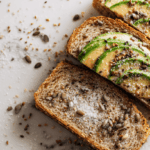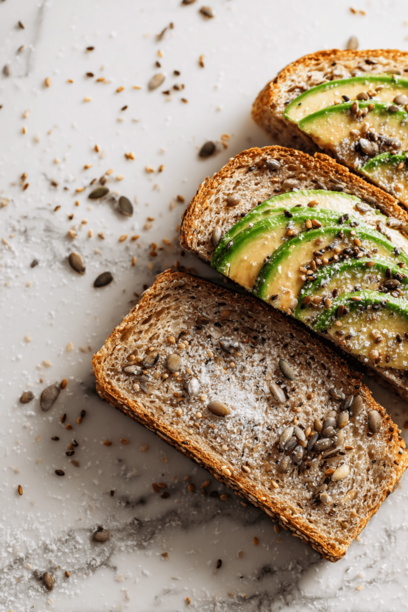The Ultimate Guide to Baking Your Own Multigrain Bread: A Journey to Wholesome Eating
Estimated reading time: 15 minutes
Key Takeaways
- Multigrain bread can be a nutritional powerhouse if made with whole grains, offering fiber, protein, and essential vitamins.
- Learn to differentiate between whole and refined grains to make healthier choices in your baking.
- Discover tips for selecting or creating multigrain bread that supports weight management and overall wellness.
- Explore creative ways to enjoy multigrain bread while maximizing its health benefits.
- Understand common mistakes and how to store your homemade loaf for freshness.
Table of Contents
Multigrain Bread Isn’t Always Healthier
Imagine standing in your kitchen, the aroma of freshly baked bread filling the air, as you slice into what you believe is a healthier option than store-bought loaves. Multigrain bread has gained popularity as a nutritious choice, but not every homemade version lives up to the hype. The difference comes down to the grains you select and how you prepare them, ensuring you’re getting the full benefits of fiber and essential nutrients.
In my own baking journey, I’ve experimented with various recipes, only to realize that a loaf packed with refined flours won’t provide the sustained energy I crave. To create a truly nourishing multigrain bread, focus on ingredients like whole wheat, oats, and seeds, aiming for at least 3 grams of fiber per serving while keeping added sugars minimal.
By the end of this guide, you’ll know how to tweak your recipe for optimal health, drawing from expert advice and my personal successes. Remember, the key is in the details—like choosing whole grains over refined ones to support digestion and overall wellness.
Types of Grains
When I first delved into baking multigrain bread, I was amazed at how the types of grains could transform a simple loaf. The nutritional value depends on whether you’re using whole or refined grains, which affects everything from texture to health benefits.
Whole grains keep the entire kernel intact, including the bran, germ, and endosperm, providing a wealth of fiber, vitamins, and minerals that promote heart health and stable blood sugar.
- The bran offers fiber for better digestion.
- The germ is rich in healthy fats and antioxidants.
- The endosperm supplies energy through complex carbohydrates.
On the other hand, refined grains strip away these nutrient-dense parts, leaving a softer bread that’s less filling. For instance, in my recipe, I prioritize whole grains like oats and barley to elevate the bread’s profile. This approach ensures your multigrain bread isn’t just tasty but also supports long-term health, much like the whole-grain options recommended by nutrition experts.
How Multigrain Bread Compares to Other Breads
As a home baker, I’ve often compared my multigrain bread to classics like white and whole wheat loaves, and the results are eye-opening. While multigrain can offer superior nutrition, it depends on the ingredients used.
- Compared to white bread: White bread relies on refined flour, lacking fiber, whereas my multigrain recipe with whole grains provides more protein and helps maintain steady energy levels.
- Compared to whole wheat bread: Whole wheat is solid, but multigrain adds variety like rye or quinoa, boosting nutrient diversity if all grains are whole.
- Compared to sprouted grain bread: Sprouted versions enhance digestibility, and when combined in multigrain, they can be even more beneficial, as I’ve found in my trials.
For example, a basic multigrain loaf might have only 1 gram of fiber, but mine, with sprouted grains, hits 4 grams, making it a better choice for daily health. This comparison underscores why whole grains are essential for multigrain bread to shine.
How to Choose or Make Healthy Multigrain Bread
Don’t Rely on the Name Alone
When I shop for bread or plan my bakes, I never trust the label at face value. “Multigrain” sounds healthy, but it’s the ingredients that tell the real story, so always check for whole grains first.
Choose Breads Made with Whole Grains
Look for terms like “whole oat flour” in the list; my recipe uses these to ensure maximum nutrients. This step has been a game-changer in my baking routine.
Pick Breads with Fiber and Little Added Sugar
Aim for at least 3 grams of fiber per serving and keep sugars under 3 grams to avoid spikes. In my experience, this balance makes for a satisfying loaf that supports weight management.
Look for the Whole-Grain Stamp
The Whole Grains Council’s stamp is a reliable indicator; go for the 100% version, as I do in my recipes, to guarantee quality.
Healthy Ways to Enjoy Multigrain Bread
Once you’ve baked your multigrain bread, the fun begins with how you pair it. From my kitchen experiments, I’ve found that thoughtful combinations enhance its health benefits.
- Avocado and egg toast: Top with smashed avocado and a poached egg for a protein boost.
- Nut butter with fruit: Spread almond butter and add berries for natural sweetness and fiber.
- Simple sandwiches: Use one slice with veggies and lean protein to keep it light.
These ideas turn multigrain bread into a versatile meal component, as I’ve shared in my healthy toppings guide.
Conclusion
Baking multigrain bread at home has been a rewarding part of my routine, offering a customizable path to better nutrition. By focusing on whole grains and avoiding common pitfalls like over-sugaring, you can create a loaf that’s truly beneficial.
Remember to store your bread in an airtight container to keep it fresh for up to a week, and watch for signs of over-proofing as a common mistake. As you experiment, you’ll find the perfect balance for your needs, much like I did through trial and error.
Frequently Asked Questions
Is multigrain bread healthier than white bread?
Answer: Yes, when made with whole grains, as it provides more fiber and nutrients, helping with digestion and energy stability.
What’s the difference between multigrain and whole grain bread?
Answer: Multigrain uses multiple grains that may be refined, while whole grain ensures the full kernel is used for better nutrition.
How can I tell if my multigrain bread is healthy?
Answer: Check for whole grains as the first ingredient, at least 3 grams of fiber, and low added sugars.
Can multigrain bread help with weight management?
Answer: Absolutely, its high fiber content promotes fullness and stabilizes blood sugar, aiding in weight control.
Is multigrain bread good for people with diabetes?
Answer: It can be, especially with whole grains that release energy slowly, but always consult a doctor for personalized advice.










